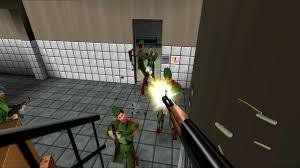Exploring Vertex: The Latest Addictive Challenge from NYT Games

‘The world of online puzzle games has exploded in recent years, with NYT Games standing at the forefront of this trend. Among their offerings, one game is gaining particular traction: Vertex. The game’s simplicity is deceptive, hiding the complexities and challenges that make it incredibly addictive.
For puzzle enthusiasts, “Vertex” has become a favorite among the many NYT Games options, combining visual stimulation with logical problem-solving. In this blog, we’ll delve into what makes Vertex so captivating, provide tips on how to play, and explore strategies to master the game.
What is Vertex NYT Games
Vertex is a visually engaging puzzle game found on the NYT Games platform. Players are tasked with connecting points—or vertices—to form geometric shapes. What starts as a scattered array of dots and lines soon transforms into intricate images, making it as satisfying as it is challenging.
Unlike traditional crossword puzzles or word games typically associated with NYT Games, Vertex offers a refreshing twist by engaging spatial reasoning skills rather than just verbal or logical prowess. Whether you’re a seasoned puzzle lover or new to NYT Games, Vertex has something to offer everyone.
How to Play Vertex in NYT Games
Playing Vertex on NYT Games is simple in concept but intricate in execution. Players are presented with a grid of vertices that they must connect to form hidden shapes or images. Each point can be connected to multiple others, and part of the challenge is figuring out the correct connections to complete the puzzle.
You’ll often have to use trial and error, but the game provides visual cues, such as shading, to help you. For players unfamiliar with the visual nature of this game, don’t worry—NYT Games has tutorials and hints to guide you through the process.
The Rise of Vertex in NYT Games
NYT Games has long been known for its iconic crossword puzzles, Spelling Bee, and other brain teasers, but Vertex represents a new direction for the platform. With the rise of visual puzzle games like Vertex, NYT Games caters to an audience that enjoys more than just word-based challenges.
Vertex’s increasing popularity demonstrates a shift in how players are engaging with puzzles, opting for more interactive and visually stimulating games. Adding Vertex to NYT Games broadens the scope of puzzle entertainment, making it accessible to a broader audience.
Why is Vertex from NYT Games So Addictive?
The addictive nature of Vertex in NYT Games can be attributed to several factors. First, there’s the inherent satisfaction of watching a random collection of points and lines slowly evolve into a recognizable image. Each connection feels like a small victory, motivating players to see the final result.
Additionally, NYT Games has cleverly designed the puzzles to range in difficulty, allowing quick wins and more challenging, intricate designs. The game’s escalating complexity keeps players coming back for more, eager to test their skills on new puzzles.
Strategies for Mastering Vertex in NYT Games
While Vertex may seem like a game of trial and error at first, there are strategies you can employ to improve your success rate. One tip is to look at the bigger picture—often, the vertices form larger shapes like triangles or squares that can guide your connections.
Another strategy is to start from the outer points and work your way inward, as this often makes it easier to visualize the final image. NYT Games also provides subtle shading and line thickness cues to help players identify which connections are essential and extraneous.
Daily Challenges in Vertex NYT Games
One of the most exciting features of Vertex in NYT Games is its daily challenges. Every day, NYT Games releases a new Vertex puzzle players can tackle. These daily challenges vary in difficulty, providing a fresh experience each time.
For avid puzzle solvers, these daily challenges offer a reason to return to NYT Games consistently, as there’s always a new challenge awaiting. The sense of accomplishment after completing these puzzles—and seeing how quickly you can solve them—keeps players engaged and eager for the next day’s puzzle.
How Vertex Fits Into the Broader NYT Games Universe
Vertex is just part of the rich tapestry of puzzles NYT Games offers. While the crossword puzzle may be NYT Games’ flagship product, other games like Spelling Bee, Letter Boxed, and Tiles have developed their fan bases.
Vertex fits perfectly into this collection by offering a distinct and visually-oriented challenge. Its geometric and spatial focus makes it a unique offering within NYT Games, appealing to a broader audience beyond those who enjoy word-based games. It serves as a great complement to the platform’s diverse array of games.
Comparing Vertex to Other NYT Games Puzzles
How does Vertex stack up against other popular games on NYT Games, like the crossword or Spelling Bee? While the crossword and Spelling Bee are word-focused, Vertex emphasizes visual problem-solving. The challenge in Vertex comes not from knowledge of words or language but from spatial reasoning and logical deduction.
This makes Vertex an excellent option for players who want a break from traditional word puzzles but still enjoy the mental stimulation NYT Games is known for. For many, Vertex offers a refreshing change of pace that keeps them returning to NYT Games.
How NYT Game’s Keeps Vertex Fresh
A critical factor in Vertex’s ongoing popularity on NYT Game’s is how the platform continually updates and adds to the game. New puzzles are released regularly, and the daily challenges ensure players always have something new to tackle.
NYT Game’s also uses feedback from its community of players to refine and improve Vertex. The developers behind NYT Game’s are committed to keeping the experience fresh, which helps Vertex maintain its appeal in the long term. It’s this commitment to innovation that ensures Vertex remains a fan favorite.
Tips for Beginners in Vertex NYT Game’s
Starting with a patient and methodical approach is essential for those new to Vertex in NYT Game’s. Don’t be discouraged if you don’t solve the puzzle immediately—Vertex is designed to be a challenge! Focus on connecting the most apparent points first, especially at the outer edges.
As you gain more experience, you’ll develop a keener eye for spotting patterns and shapes. NYT Games offers hints if you find yourself stuck, so don’t hesitate to use them if needed. With time, you’ll master even the most difficult Vertex puzzles.
Conclusion:
In the ever-growing catalog of NYT Game’s, Vertex stands out as a unique and captivating puzzle that combines spatial reasoning with the satisfaction of visual completion. Its addictive nature, combined with a steady stream of new challenges, keeps players returning daily. Whether you’re a fan of NYT Game’s’ traditional offerings or new to their puzzles, Vertex is a must-try. It offers a refreshing change of pace from word-based games and provides just the right mix of challenge and reward. If you’re looking to dive into something new on NYT Game’s, Vertex is the perfect place to start.
FAQs:
- What is Vertex in NYT Game’s? Vertex is a visual puzzle game where players connect dots (vertices) to reveal hidden images. It’s part of the NYT Games collection and focuses on spatial reasoning.
- How do I play Vertex on NYT Game’s? In Vertex, you connect dots by drawing lines between them to form geometric shapes. The goal is to reveal a hidden image through the correct connections.
- Why is Vertex so popular in the NYT Game’s? It combines visual appeal with challenging puzzles. The satisfaction of revealing hidden images keeps players engaged and returning for more.
- Are there daily challenges in Vertex NYT Game’s? Yes, Vertex in NYT Game’s offers daily puzzles, providing a fresh challenge every day for players to solve. These are great for honing your skills over time.
- What strategies can help me master Vertex on NYT Game’s? To master Vertex, focus on the larger shapes that can guide your connections. Starting from the edges and looking for visual patterns can help you solve puzzles more efficiently.



